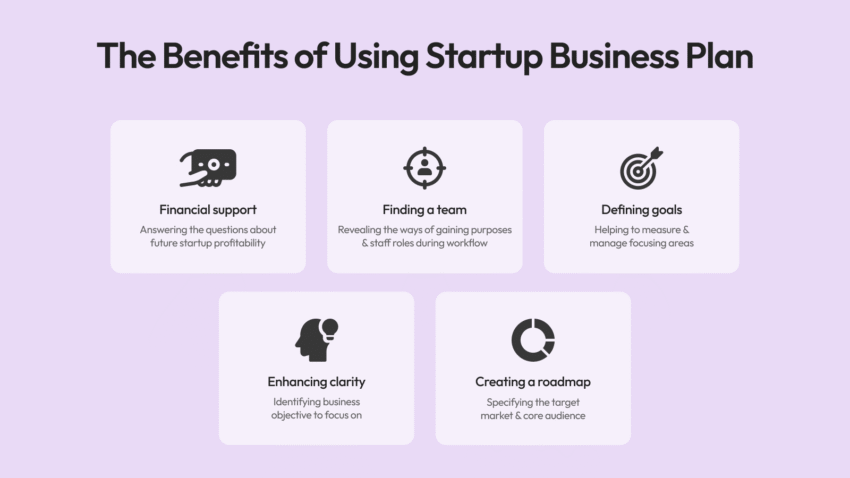If you’re hoping to start a tech company in 2025, know that you’ll be in good company. But before you begin coding or seeking investment, you’ll need a solid business plan. It is, in fact, a single-use document that is designed not to be useful to anyone you don’t want it to be useful to. It can be considered for you as a clear, concise, well-organized presentation of what your business does, how it will make money and reasons why it will succeed.
The good news? One isn’t as scary a thing to write as it sounds. That’s not very helpful, so let’s break it down into step-by-step actions you can take.
Executive Summary
Your executive summary is the “hook.” It is located at the beginning of your business plan but is often the last section that is actually written. Executive summary informs busy investors, partners, or would-be employees what you’re doing, why it matters, and how you’re going to succeed.
Picture this: You’re about to introduce a personal finance app that runs on artificial intelligence. Your executive summary would explain that you’re on a mission to bring smart money management to Gen Z, describe product features like automated budget creation and spending analysis and provide a brief overview of your revenue approach, such as freemium subscriptions.
Company Description
Next comes the company description. Don’t simply claim you’re a technology company. Explain what problem it solves for whom.
Let’s take an example: You are creating an IoT app for smart farming. You could be talking about the issue of ineffective watering, and your system of soils sensors coupled with weather data to optimally schedule waterings.
This is the section in which you tell people you are not someone who just knows there is a problem or where it lies, but rather, you understand it and have a realistic way to solve it.
Market Analysis
This section proves you did your homework. Investors want to know that you understand how big the market opportunity is and who the competition is.
Outline your target market. Who do you pursue here, urban millennials with disposable income? Mid-sized farms in drought-prone regions? Add estimates of market size, trends in growth and customer needs.
It would also be wise for stock promoters to talk about their competitors. Don’t say you don’t have competition: it’s almost never true. Instead, show them what you know and who’s out there and what you have that is different. Perhaps your AI model is more precise, your UX is superior or your pricing more flexible.

Description of Your Product or Service
This is where you dive into what you’re actually selling. If you are providing a SaaS platform for managing remote teams, describe features: tracking of tasks, real-time messaging, integration with widely used tools.
But don’t get too swept up in technical specs. Focus on benefits. How is your product a time-saver? How does it help teams work together? How does it cut costs? Keep in mind, the investors and partners aren’t always engineers. Explain to your audience why users will want what you’ve got. If you’re at an early stage, highlight how you plan to create a MVP to validate the concept and attract first users.
Your Business Model
How will you make money? This is essential. Be also clear about pricing. Let’s say you’re building a B2B cybersecurity platform that uses tiered pricing to charge per user count. Sketch those tiers and what they comprise.
If you intend to pivot to other revenue streams eventually, such as providing premium support services, bring that up as well.
Your Go-To-Market Strategy
Discuss your marketing and sales strategy. For a consumer app, perhaps you will use social media advertising, influencer partnerships and app store optimization. For enterprise software, you may want to try content marketing, conferences and direct sales.
Be realistic. Investors understand that you can’t just “go viral.” Demonstrate that you have concrete, attainable plans to gain and keep customers.

Introduce Your Team
Even early-stage investors commonly say they bet on teams more than they bet on ideas. Post a few quick bios of your founding team members. Emphasize the relevant experience you do have, maybe a previous startup, industry knowledge or technical skills.
If your CTO once created scalable systems for a Fortune 500 company, mention it. If your CMO has successfully led app launches in the past, bring it up. This section instills trust that you are the right person to carry out that vision.
Financial Projections
Now, it’s time to demonstrate you’ve thought through the numbers. Disclose key assumptions like customer acquisition cost, churn rate and pricing.
Projections will obviously not be perfect for an early stage startup. But investors are looking for the tango of you getting the business levers and your plan toward sustainability.
If you’re looking for investment, say how much you need, what it will be used for (such as hiring engineers or marketing), and what the investor will get.
Final Thoughts
A business plan for a tech startup in 2025 is not a mere formality. It’s where you show you’re ready, credible and able to meet the tests.
But don’t try to be perfect the first time. Start with a simple draft. Iterate. Ask for feedback from mentors or potential investors. Your business will change and so will your plan. That’s the way it ought to be.

